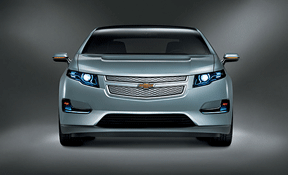Continuity of Desires, If Not Means
Posted on February 1, 2010
Filed Under Technology | Leave a Comment
 The Romans could never have imagined, nearly 2,000 years ago, that one day one of their gadgets would be featured on Twitter. But there it is – tweets and retweets on “The World’s Oldest Swiss Army Knife” have been frequent of late.
The Romans could never have imagined, nearly 2,000 years ago, that one day one of their gadgets would be featured on Twitter. But there it is – tweets and retweets on “The World’s Oldest Swiss Army Knife” have been frequent of late.
The gadget in question, which looks for all the world like an early prototype Swiss Army Knife as turned out, say, around the dawn of the 20th century, is a Roman eating tool, circa 200 A.D., with a fork, spoon, toothpick and a few other dining implements, all of which could be folded away.
Thus we have an example of continuity, not so much of a given implement, but of human interest in terms of functions – like eating – and a desire to make them easier or more convenient to handle. That’s the origin of technological progress, then and now.
Felt need stirs ingenuity and breeds technological advance. And our needs, seemingly, haven’t been so different over the centuries. (Though the Romans probably couldn’t have envisioned the ability to watch images move in a box.) As knowledge has piled up, we’ve gotten a lot more able to satisfy our yearnings – for better or worse.
 On the same Gizmodo Web page is another example of continuity – a job-hunter’s resumé. Only this job-hunter was Leonardo da Vinci.
On the same Gizmodo Web page is another example of continuity – a job-hunter’s resumé. Only this job-hunter was Leonardo da Vinci.
Leonardo needed a resumé? Apparently so. “Most illustrious Lord…,” he began (we wouldn’t sound so fawning today), “I shall endeavor, without prejudice to any one else, to explain myself to your Excellency…” The painter of the Mona Lisa and The Last Supper went on (in handwriting, of course) to describe a virtual arsenal he had developed – with implements and attack-resistant vessels for use on land or sea, starting with “extremely light and strong bridges, adapted to be most easily carried…”
We trust the Duke of Milan, the lord Da Vinci was trying to impress, hired him. The Duke, of course, would have been well-served. Would that we could do as well building up a storehouse of contemporary technology, but for peaceful uses, of course. – Doug Bedell
‘High-Speed’ Trains Coming for the U.S., Finally
Posted on January 28, 2010
Filed Under Technology | Leave a Comment
We’ve been enjoying Wired’s spread on bullet trains finally (emphasis added) coming to the U.S. Yes, the historical tablet accompanying the Wired pieces shows that Japan introduced a 130 mph train in 1964, France a 161.6 mph one in 1981, China a 267 mph train in 2004 and France, again, a big-wheeled train capable of 357 mph in 2007.
We’ve long needed a fast, low-hassle alternative to airline travel. We’ve be waiting so long, on fact, one might think the airlines have been responsible for railroad planning and promotion. (At the current speeds they do travel, though, AMTRAK’s trains aren’t bad. We went coast-to-coast and back on a couple last year. Very pleasant, and no pat-downs.)
The St. Petersburg Times story reporting on President O’Bama’s visit to Tampa today to announce $1.25 billion in federal funding for a high-speed rail line there advises on the byplay between the President, Vice President Joe Biden and the Florida crowds, but doesn’t say how fast the “high-speed” trains are expected to run. That’s part of the problem – our personality-based, politically powered culture tends to shun specifics of technology – even big-time concepts like high-speed rail get shunted aside in the clamor.
Wired says the Tampa-Orlando trains are supposed to run at 180 m.p.h. We hope they do. – Doug Bedell
Wired illustration by Paul Rogers
China’s Shadow Behind a U.S. Electric Car
Posted on January 22, 2010
Filed Under Technology | Leave a Comment
We’ve been waiting for electric cars to start making an appearance on U.S. highways – not hybrids but full-out electric models. Chevrolet’s much-anticipated Volt is now scheduled for launching in November. It will run 40 miles on an electric charge and, says Chevy, “uses a range-extending gas generator that produces enough energy to power it for hundreds of miles on a single tank of gas.” What that’s referring to, explains Wikipedia’s article on the Volt, is “a small 4-cylinder gasoline internal combustion engine (that) creates electricity on-board using a 53 kW (71 hp) generator to extend the Volt’s range to more than 300 miles (483 km).”
Volts are scheduled for only 10,000 cars in 2011 – their introductory year – and maybe 60,000 in 2012. And the price is estimated to be near $40,000, before any federal tax credits applicable by then. So that’s low output and a high price, for starters anyway, on a U.S. electric car.
We were nonetheless encouraged by a Wall Street Journal blog post in December on a joint-venture between A123 Systems, a Massachusetts-based battery company, and SAIC (Shanghai Automotive Industry Corporation), “China’s biggest auto-maker by volume which already has a couple (electric cars) in the pipeline.”
A123, a maker of lithium ion batteries, seemed to have lost its electric car prospects when Chrysler dropped its plans for one. So the Chinese deal has given the U.S. company a boost, and least for now.
But the Journal notes there are other interests aiming for electric cars – “local (U.S.) rivals backed by Warren Buffet, playing the same game.” The technology is either so vexing to producers, or perplexing to car buyers, that lots of folks seem to be wishing there wasn’t a need for it. But there is.
Even so, oil prices are probably going to have to rise again, and stay higher, for us to get serious about getting electric cars on U.S. roads. As in so many other areas, though, the Chinese may provide a push. – Doug Bedell
The Chevrolet Volt
Diving Deep to View Creatures that Vanish Before Your Eyes
Posted on January 19, 2010
Filed Under Technology | Leave a Comment
Picture yourself in total darkness, with streaks of flourescent light darting across the dark or suggestive of bigger, slower moving creatures. In this instance, you’ll be deep in the ocean, fortunate to have David Gallo as your guide on a deep-sea dive.
Gallo was trained as a geologist but he’s an acclaimed oceanographer now. On this TED.com video he narrates – at a screen in a lecture hall – a dive into regions where undersea creatures have an amazing capability to camouflage themselves to hide from predators like barracudas. Changing color and texture, the wiley creatures fade into plant or rock clusters in a manner that makes them disappear before your eyes. The audience in Gallo’s lecture hall gasps and applauds – it can’t help but respond in wonder.
The florescence is explained as “bioluminescence,” a term that almost does justice to the softly glowing appearance of these dwellers in the deep. Photographed with Dr. Edith Witter’s undersea camera, there are fish with pulsating eyes and pinwheel bodies – a truly astonishing display of solitary ocean creatures. You realize that they have no idea of what they’re missing in an “atmosphere” of water, and you wonder, what may we be missing in our own airy environment.
Go on this all too brief tour with Gallo, it’s a marvel of undersea photography and knowledgeable narration. If your life or business revolves around high-tech, watching this video should make you humble: whatever you do, it pales in comparison to nature’s technology.
Gallo works as an undersea explorer, sometimes in partnership with Titanic-hunter Robert Ballard, and travels on behalf of the Woods Hole laboratories to explain how the oceans are being mapped in “unprecedented clarity and detail.” – Doug Bedell
David Gallo
« go backRecently
- Presentations With Forethought
- Technical Writing’s Lineage – Surely It’s Deeper than Digital
- At the Holidays, Twitting Amazon
- Successful Cookie Baking – From Mom, an Acknowledged Expert
- Slides for a Tech Writer’s Craft
- Digital or Not, Be Clear
- Being Watchful About Digital Designs…
- When Proposals Don’t Click, Keep Making Them Anyway
- Like a Good Gardener, Help an Enterprise Keep Itself Current
- We’re Leaders All, And Need to Think That Way
Categories
Archives
- January 2017
- December 2016
- November 2016
- October 2016
- September 2016
- August 2016
- July 2016
- June 2016
- May 2016
- April 2016
- March 2016
- February 2016
- January 2016
- December 2015
- November 2015
- October 2015
- September 2015
- August 2015
- July 2015
- June 2015
- May 2015
- April 2015
- March 2015
- February 2015
- January 2015
- December 2014
- November 2014
- October 2014
- March 2014
- February 2014
- January 2014
- December 2013
- November 2013
- October 2013
- September 2013
- August 2013
- July 2013
- June 2013
- May 2013
- April 2013
- March 2013
- February 2013
- January 2013
- December 2012
- November 2012
- October 2012
- September 2012
- August 2012
- July 2012
- June 2012
- May 2012
- April 2012
- March 2012
- February 2012
- January 2012
- December 2011
- November 2011
- October 2011
- September 2011
- August 2011
- July 2011
- June 2011
- May 2011
- April 2011
- March 2011
- February 2011
- January 2011
- December 2010
- November 2010
- October 2010
- September 2010
- August 2010
- July 2010
- June 2010
- May 2010
- April 2010
- March 2010
- February 2010
- January 2010


